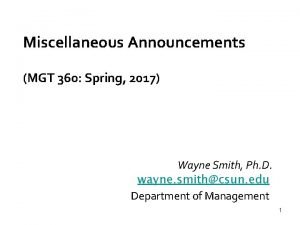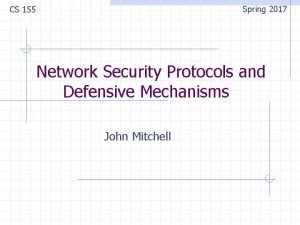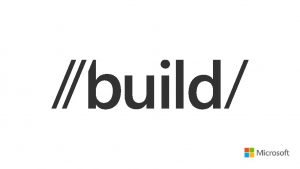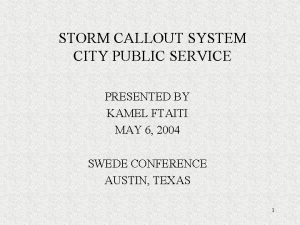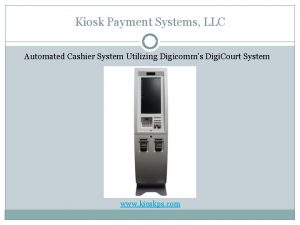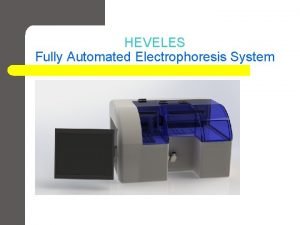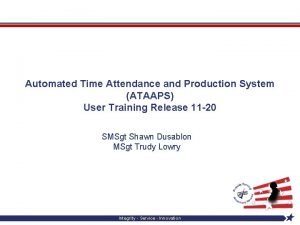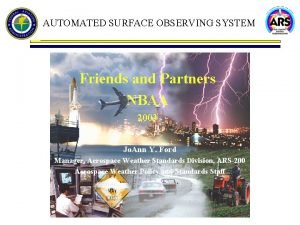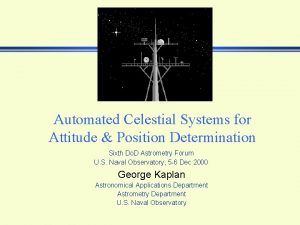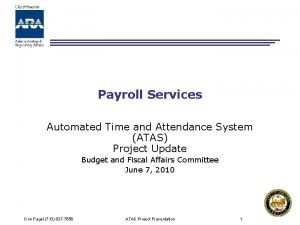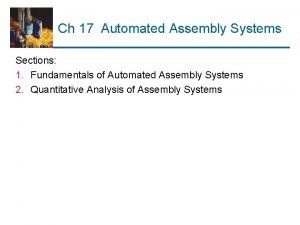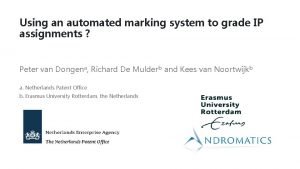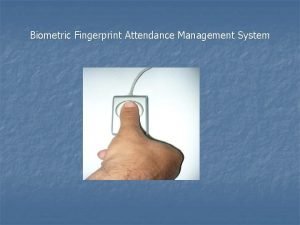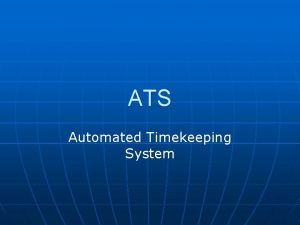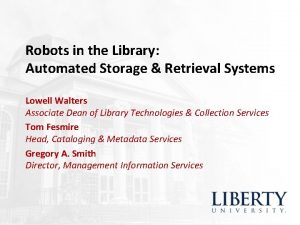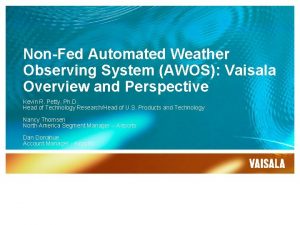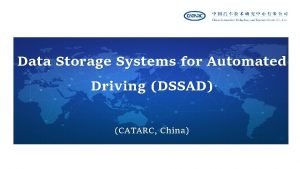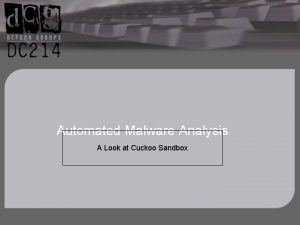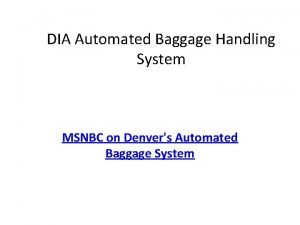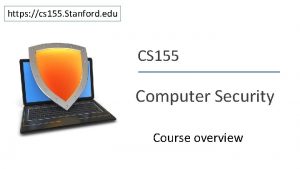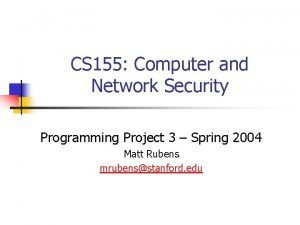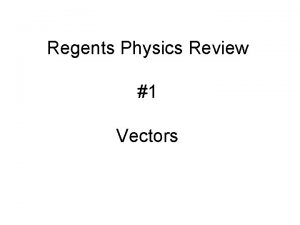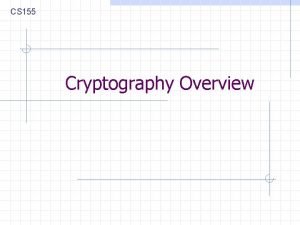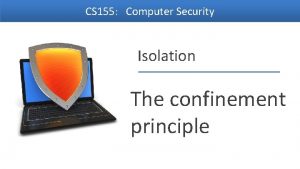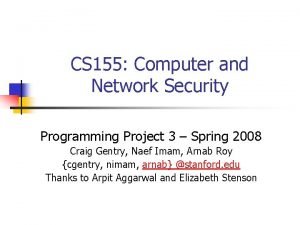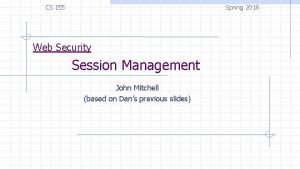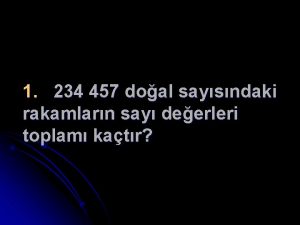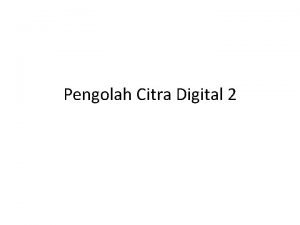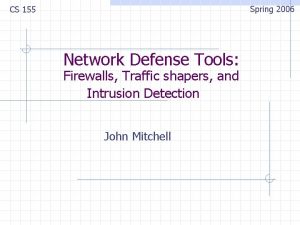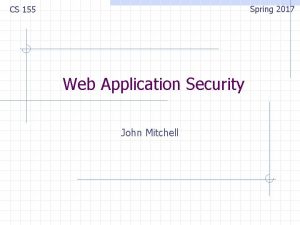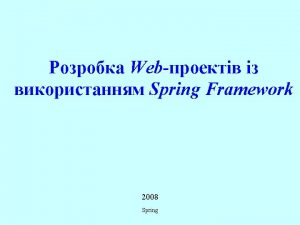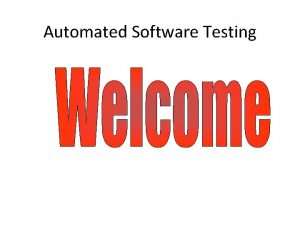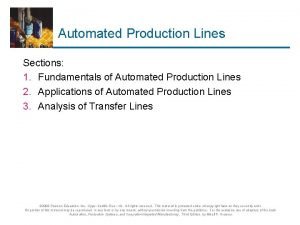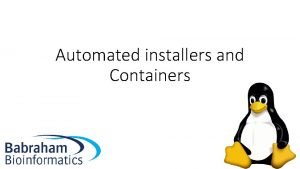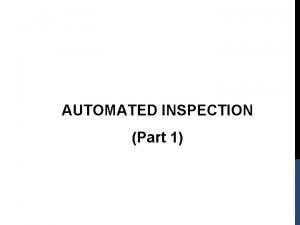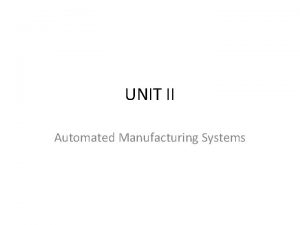Spring 2017 CS 155 Automated Tools for System



![Facebook missed a single security check… [Pop. Photo. com Feb 10] Facebook missed a single security check… [Pop. Photo. com Feb 10]](https://slidetodoc.com/presentation_image/491e41df9d2378c715530fabf3deb690/image-4.jpg)














































































- Slides: 82

Spring 2017 CS 155 Automated Tools for System and Application Security John Mitchell

Outline • General discussion of code analysis tools – Goals and limitations of static, dynamic tools – Static analysis based on abstract states • Security tools for traditional systems programming – Property checkers from Engler et al. , Coverity – Sample security-related results • Web security analysis – Black-box security tools – Study based on these tools: security of coding • Static analysis for Android malware – Determining whether app is malicious – Using tools for related security studies Slides from: S. Bugrahe, A. Chou, I&T Dillig, D. Engler, J. Franklin, A. Aiken, …

Software bugs are serious problems Thanks: Isil and Thomas Dillig
![Facebook missed a single security check Pop Photo com Feb 10 Facebook missed a single security check… [Pop. Photo. com Feb 10]](https://slidetodoc.com/presentation_image/491e41df9d2378c715530fabf3deb690/image-4.jpg)
Facebook missed a single security check… [Pop. Photo. com Feb 10]

App stores

How can you tell whether software you – Develop – Buy is safe to install and run?

Cost of Fixing a Defect Credit: Andy Chou, Coverity

Cost of security or data privacy vulnerability?

Tools to help you

Entry 1 2 3 4 Exit Software Manual testing only examines small subset of behaviors 1 2 4 1 3 4 1 2 4 1 3 4 1 2 3 1 2 4 1 3 4 1 2 3 1 3 4 1 2 4 1 3 4 . . . Behaviors 10

Program Analyzers Code Report Program Analyzer Spec Type Line 1 mem leak 324 2 buffer oflow 4, 353, 245 3 sql injection 23, 212 4 stack oflow 86, 923 5 dang ptr 8, 491 … … … 10, 502 info leak 10, 921

Two options • Static analysis – Automated methods to find errors or check their absence • Consider all possible inputs (in summary form) • Find bugs and vulnerabilities • Can prove absence of bugs, in some cases • Dynamic analysis – Run instrumented code to find problems • Need to choose sample test input • Can find vulnerabilities but cannot prove their absence

Static Analysis • Long research history • Decades of commercial products – Find. Bugs, Fortify, Coverity, MS tools, …

Dynamic analysis • Instrument code for testing – Heap memory: Purify – Perl tainting (information flow) – Java race condition checking • Black-box testing – Fuzzing and penetration testing – Black-box web application security analysis 14

Summary • Program analyzers – Find problems in code before it is shipped to customers or before you install and run it • Static analysis – Analyze code to determine behavior on all inputs • Dynamic analysis – Choose some sample inputs and run code to see what happens

Outline • General discussion of code analysis tools – Goals and limitations of static, dynamic tools – Static analysis based on abstract states • Security tools for traditional systems programming – Property checkers from Engler et al. , Coverity – Sample security-related results • Web security analysis – Black-box security tools – Study based on these tools: security of coding • Static analysis for Android malware – Determining whether app is malicious – Using tools for other security studies Slides from: S. Bugrahe, A. Chou, I&T Dillig, D. Engler, J. Franklin, A. Aiken, …

Soundness, Completeness Property Definition Soundness “Sound for reporting correctness” Analysis says no bugs No bugs or equivalently There is a bug Analysis finds a bug Completeness “Complete for reporting correctness” No bugs Analysis says no bugs Recall: A B is equivalent to ( B) ( A)

Sound Incomplete Reports all errors Reports no false alarms Reports all errors May report false alarms Undecidable Decidable Unsound Complete May not report all errors Reports no false alarms Decidable May not report all errors May report false alarms Decidable

Sound Program Analyzer Analyze large code bases Code Report Program Analyzer Spec Type Line 1 mem leak 324 2 buffer oflow 4, 353, 245 3 sql injection 23, 212 4 stack oflow 86, 923 5 dang ptr 8, 491 … … … 10, 502 info leak 10, 921 Sound: may report many warnings false alarm

Sound Over-approximation of Behaviors Modules Reported Error . . . False Alarm Software approximation is too coarse… …yields too many false alarms Behaviors

Program execution based on abstract states

Does this program ever crash? entry X 0 Is Y = 0 ? yes no X X+1 X X-1 Is Y = 0 ? yes Is X < 0 ? yes crash no no exit

Does this program ever crash? entry X 0 Is Y = 0 ? yes no X X+1 X X-1 Is Y = 0 ? yes Is X < 0 ? yes crash infeasible path! … program will never crash no no exit

Try analyzing without approximating… entry X 0 X=0 Is Y = 0 ? yes X=2 0 1 X=3 1 2 no X X+1 X=3 1 2 X X-1 Is Y = 0 ? X=3 1 2 yes Is X < 0 ? yes crash non-termination! … therefore, need to approximate no no exit X=3 1 2

dataflow elements din X=0 X X+1 X=1 f dout = f(din) dout dataflow equation transfer function

din 1 X=0 X X+1 f 1 X=1 dout 1 X=1 din 2 X=1 dout 1 = din 2 f 2 Is Y = 0 ? dout 2 dout 1 = f 1(din 1) dout 2 = f 2(din 2)

din 1 din 2 f 1 f 2 dout 1 dout 2 djoin din 3 f 3 dout 3 What is the space of dataflow elements, ? What is the least upper bound operator, ⊔? dout 1 = f 1(din 1) dout 2 = f 2(din 2) djoin = dout 1 ⊔ dout 2 djoin = din 3 dout 3 = f 3(din 3) least upper bound operator Example: union of possible values

Try analyzing with “signs” approximation… entry X 0 X=0 Is Y = 0 ? yes X=0 lost precision X = pos X=T no X X+1 X X-1 Is Y = 0 ? X=T yes Is X < 0 ? X=T yes crash terminates. . . … but reports false alarm … therefore, need more precision no no X=0 X = neg X=T exit X=T

Sound Over-approximation of Behaviors Reported Error . . . False Alarm Software approximation is too coarse… …yields too many false alarms Behaviors

X=T true X neg X = T X pos X = pos X=0 X= X= refined signs lattice X = neg Y 0 Y=0 false Boolean formula lattice

Try analyzing with “path-sensitive signs” approximation… entry X 0 true X=0 Is Y = 0 ? Y=0 X = pos no precision loss Y=0 X = pos Y 0 X = neg Y=0 refinement yes X=0 X = pos no X X+1 X X-1 X=0 Y 0 X = neg Y 0 X = pos Y=0 Is Y = 0 ? yes Is X < 0 ? yes crash terminates. . . … no false alarm … soundly proved never crashes no exit no

Summary of sound analysis • Sound vs Complete – Cannot be sound and complete – Sound: can guarantee absence of bugs • Sound analysis based on abstract states – Symbolically execute code using a description of all possible states at this program point – Better description: more precise, less efficient • In practice – Use basic approach, possibly without soundness • E. g. , do not run loops to termination – But keep the example in mind as good illustration

Outline • General discussion of code analysis tools – Goals and limitations of static, dynamic tools – Static analysis based on abstract states • Security tools for traditional systems programming – Property checkers from Engler et al. , Coverity – Sample security-related results • Web security analysis – Black-box security tools – Study based on these tools: security of coding • Static analysis for Android malware – Determining whether app is malicious – Using tools for other security studies Slides from: S. Bugrahe, A. Chou, I&T Dillig, D. Engler, J. Franklin, A. Aiken, …

Unsound Program Analyzer analyze large code bases Code Report Program Analyzer Spec Line 1 mem leak 2 buffer oflow 4, 353, 245 3 sql injection 23, 212 4 stack oflow 86, 923 5 dang ptr 8, 491 … Not sound: may miss some bugs Type … 324 … false alarm

Bugs to Detect Some examples • Crash Causing Defects • Null pointer dereference • Use after free • Double free • Array indexing errors • Mismatched array new/delete • Potential stack overrun • Potential heap overrun • Return pointers to local variables • Logically inconsistent code • Uninitialized variables • Invalid use of negative values • Passing large parameters by value • Underallocations of dynamic data • Memory leaks • File handle leaks • Network resource leaks • Unused values • Unhandled return codes • Use of invalid iterators Slide credit: Andy Chou 35

Example code with function def, calls #include <stdlib. h> #include <stdio. h> void say_hello(char * name, int size) { printf("Enter your name: "); fgets(name, size, stdin); printf("Hello %s. n", name); } int main(int argc, char *argv[]) { if (argc != 2) { printf("Error, must provide an input buffer size. n"); exit(-1); } int size = atoi(argv[1]); char * name = (char*)malloc(size); if (name) { say_hello(name, size); free(name); } else { printf("Failed to allocate %d bytes. n", size); } } 36

Callgraph main atoi exit free malloc say_hello fgets printf 37

Reverse Topological Sort 8 atoi 3 exit 4 main free 5 Idea: analyze function before you analyze caller malloc say_hello 7 6 fgets 2 printf 1 38

Apply Library Models 8 atoi 3 exit 4 main free 5 Tool has built-in summaries of library function behavior malloc say_hello 7 6 fgets 2 printf 1 39

Bottom Up Analysis 8 atoi 3 exit 4 main free 5 Analyze function using known properties of functions it calls malloc say_hello 7 6 fgets 2 printf 1 40

Bottom Up Analysis 8 atoi 3 exit 4 main free 5 Analyze function using known properties of functions it calls malloc say_hello 7 6 fgets 2 printf 1 41

Bottom Up Analysis 8 atoi 3 exit 4 main free 5 Finish analysis by analyzing all functions in the program malloc say_hello 7 6 fgets 2 printf 1 42

Example: Chroot protocol checker • Goal: confine process to a “jail” on the filesystem − chroot() changes filesystem root for a process • Problem − chroot() itself does not change current working directory chroot() chdir(“/”) open(“. . /file”, …) Error if open before chdir 44

Tainting checkers 46

Application to Security Bugs • Stanford research project − Ken Ashcraft and Dawson Engler, Using Programmer-Written Compiler Extensions to Catch Security Holes, IEEE Security and Privacy 2002 − Used modified compiler to find over 100 security holes in Linux and BSD − http: //www. stanford. edu/~engler/ • Benefit − Capture recommended practices, known to experts, in tool available to all 47

Sanitize integers before use Warn when unchecked integers from untrusted sources reach trusting sinks Syscall param Network packet copyin(&v, p, len) any<= v. taint any ed memcpy(p, q, v) array[v] copyin(p, q, v) while(i < v) copyout(p, q, v) … v. clea n Use(v) ERROR Linux: 125 errors, 24 false; BSD: 12 errors, 4 false

Example security holes • Remote exploit, no checks /* 2. 4. 9/drivers/isdn/act 2000/capi. c: actcapi_dispatch */ isdn_ctrl cmd; . . . while ((skb = skb_dequeue(&card->rcvq))) { msg = skb->data; . . . memcpy(cmd. parm. setup. phone, msg->msg. connect_ind. addr. num, msg->msg. connect_ind. addr. len - 1); 49

Example security holes • Missed lower-bound check: /* 2. 4. 5/drivers/char/drm/i 810_dma. c */ if(copy_from_user(&d, arg, sizeof(arg))) return –EFAULT; if(d. idx > dma->buf_count) return –EINVAL; buf = dma->buflist[d. idx]; Copy_from_user(buf_priv->virtual, d. address, d. used); 50

Environment Assumptions • Should the return value of malloc() be checked? int *p = malloc(sizeof(int)); *p = 42; OS Kernel: Crash machine. File server: Pause filesystem. Spreadsheet: Lose unsaved changes. Library: ? Game: Annoy user. Web application: 200 ms downtime IP Phone: Annoy user. Medical device: malloc? ! 52

Statistical Analysis • Assume the code is usually right 3/4 deref int *p = malloc(sizeof(int)); *p = 42; int *p = malloc(sizeof(int)); if(p) *p = 42; int *p = malloc(sizeof(int)); *p = 42; 1/4 deref 53

Results for BSD and Linux • All bugs released to implementers; most serious fixed Linux BSD Violation Bug Fixed Gain control of system 18 15 3 3 Corrupt memory 43 17 2 2 Read arbitrary memory 19 14 7 7 Denial of service 17 5 0 0 Minor 28 1 0 0 Total 125 52 12 12 54

Outline • General discussion of code analysis tools – Goals and limitations of static, dynamic tools – Static analysis based on abstract states • Security tools for traditional systems programming – Property checkers from Engler et al. , Coverity – Sample security-related results • Web security analysis – Black-box security tools – Study based on these tools: security of coding • Static analysis for Android malware – Determining whether app is malicious – Using tools for other security studies Slides from: S. Bugrahe, A. Chou, I&T Dillig, D. Engler, J. Franklin, A. Aiken, …

Survey of Web Vulnerability Tools Local Remote >$100 K total retail price

Example scanner UI

Test Vectors By Category Test Vector Percentage Distribution

Detecting Known Vulnerabilities for previous versions of Drupal, php. BB 2, and Word. Press Good: Info leak, Session Decent: XSS/SQLI Poor: XCS, CSRF (low vector count? )

Vulnerability Detection

Secure development

Experimental Study • What factors most strongly influence the likely security of a new web site? – Developer training? – Developer team and commitment? • freelancer vs stock options in startup? – Programming language? – Library, development framework? • How do we tell? – Can we use automated tools to reliably measure security in order to answer the question above?

Approach • Develop a web application vulnerability metric – Combine reports of 4 leading commercial black box vulnerability scanners and • Evaluate vulnerability metric – using historical benchmarks and our new sample of applications. • Use vulnerability metric to examine the impact of three factors on web application security: – startup company or freelancers – developer security knowledge – Programming language framework

Data Collection and Analysis • Evaluate 27 web applications – from 19 Silicon Valley startups and 8 outsourcing freelancers – using 5 programming languages. • Correlate vulnerability rate with – Developed by startup company or freelancers – Extent of developer security knowledge (assessed by quiz) – Programming language used.

Comparison of scanner vulnerability detection

Developer security self-assessment

Number of applications Language usage in sample

Summary of developer study • Security scanners are useful but not perfect – Tuned to current trends in web application development – Tool comparisons performed on single testbeds are not predictive in a statistically meaningful way – Combined output of several scanners is a reasonable comparative measure of code security, compared to other quantitative measures • Based on scanner-based evaluation – Freelancers are more prone to introducing injection vulnerabilities than startup developers, in a statistically meaningful way – PHP applications have statistically significant higher rates of injection vulnerabilities than non-PHP applications; PHP applications tend not to use frameworks – Startup developers are more knowledgeable about cryptographic storage and same-origin policy compared to freelancers, again with statistical significance. – Low correlation between developer security knowledge and the vulnerability rates of their applications Warning: don’t hire freelancers to build secure web site in PHP.

Outline • General discussion of code analysis tools – Goals and limitations of static, dynamic tools – Static analysis based on abstract states • Security tools for traditional systems programming – Property checkers from Engler et al. , Coverity – Sample security-related results • Web security analysis – Black-box security tools – Study based on these tools: security of coding • Static analysis for Android malware – Determining whether app is malicious – Using tools for other security studies Slides from: S. Bugrahe, A. Chou, I&T Dillig, D. Engler, J. Franklin, A. Aiken, …

STAMP Admission System Static Analysis More behaviors, fewer details STAMP Dynamic Analysis Fewer behaviors, more details Dynamic Alex Aiken, John Mitchell, Saswat Anand, Jason Franklin Osbert Bastani, Lazaro Clapp, Patrick Mutchler, Manolis Papadakis

Data Flow Analysis get. Loc() Source: Location send. SMS() send. Inet() Location • SMS Location Sink: SMS Sink: Internet Source-to-sink flows o Sources: Location, Calendar, Contacts, Device ID etc. o Sinks: Internet, SMS, Disk, etc.

Applications of Data Flow Analysis • • Malware/Greyware Analysis o Data flow summaries enable enterprise-specific policies API Misuse and Data Theft Detection FB API • • Source: FB_Data Send Internet Sink: Internet Automatic Generation of App Privacy Policies o Avoid liability, protect consumer privacy Policy This app collects your: Contacts Phone Number Address Vulnerability Discovery Web Source: Untrusted_Data SQL Stmt Sink: SQL

Challenges • • Android is 3. 4 M+ lines of complex code o Uses reflection, callbacks, native code Scalability: Whole system analysis impractical Soundness: Avoid missing flows Precision: Minimize false positives

STAMP Approach Too expensive! App • Models Android STAMP OS HW • Model Android/Java o Sources and sinks o Data structures o Callbacks o 500+ models Whole-program analysis o Context sensitive

Data We Track (Sources) • • • Account data Audio Calendar Call log Camera Contacts Device Id Location Photos (Geotags) SD card data SMS 30+ types of sensitive data

Data Destinations (Sinks) • • Internet (socket) SMS Email System Logs Webview/Browser File System Broadcast Message 10+ types of exit points

Currently Detectable Flow Types 396 Flow Types Unique Flow Types = Sources x Sink

Example Analysis Contact Sync for Facebook (unofficial)

Contact Sync Permissions Category Permission Description Your Accounts AUTHENTICATE_ACCOUNTS Act as an account authenticator MANAGE_ACCOUNTS Manage accounts list USE_CREDENTIALS Use authentication credentials INTERNET Full Internet access ACCESS_NETWORK_STATE View network state READ_CONTACTS Read contact data WRITE_CONTACTS Write contact data WRITE_SETTINGS Modify global system settings WRITE_SYNC_SETTINGS Write sync settings (e. g. Contact sync) READ_SYNC_SETTINGS Read whether sync is enabled READ_SYNC_STATS Read history of syncs Your Accounts GET_ACCOUNTS Discover known accounts Extra/Custom WRITE_SECURE_SETTINGS Modify secure system settings Network Communication Your Personal Information System Tools

Possible Flows from Permissions Sources READ_CONTACTS READ_SYNC_SETTINGS READ_SYNC_STATS Sinks INTERNET WRITE_SETTINGS WRITE_CONTACTS GET_ACCOUNTS WRITE_SECURE_SETTINGS INTERNET WRITE_SETTINGS

Expected Flows Sources READ_CONTACTS READ_SYNC_SETTINGS READ_SYNC_STATS Sinks INTERNET WRITE_SETTINGS WRITE_CONTACTS GET_ACCOUNTS WRITE_SECURE_SETTINGS INTERNET WRITE_SETTINGS

Observed Flows FB API Read Contacts Source: FB_Data Source: Contacts Write Contacts Send Internet Sink: Contact_Book Sink: Internet

Example Study: Mobile Web Apps • Goal Identify security concerns and vulnerabilities specific to mobile apps that access the web using an embedded browser • Technical summary • Web. View object renders web content • methods load. Url, load. Data. With. Base. Url, post. Url • add. Javascript. Interface(obj, name) allows Java. Script code in the web content to call Java object method name. foo()

Sample results Analyze 998, 286 free web apps from June 2014

Summary • General discussion of code analysis tools – Goals and limitations of static, dynamic tools – Static analysis based on abstract states • Security tools for traditional systems programming – Property checkers from Engler et al. , Coverity – Sample security-related results • Web security analysis – Black-box security tools – Study based on these tools: security of coding • Static analysis for Android malware – Determining whether app is malicious – Using tools for other security studies Slides from: S. Bugrahe, A. Chou, I&T Dillig, D. Engler, J. Franklin, A. Aiken, …
 Csun spring 2017
Csun spring 2017 Ftp server spring 2017
Ftp server spring 2017 Spring, summer, fall, winter... and spring (2003)
Spring, summer, fall, winter... and spring (2003) Winter summer autumn spring months
Winter summer autumn spring months Office developer tools for visual studio 2017
Office developer tools for visual studio 2017 Visual studio 2005
Visual studio 2005 Rostermonster arcos
Rostermonster arcos Automated cashier
Automated cashier Heveles
Heveles Ataaps time card
Ataaps time card Automated surface observing system
Automated surface observing system Automated celestial navigation system
Automated celestial navigation system Automated surface observing system
Automated surface observing system Automated surface observing system asos
Automated surface observing system asos Automated time and attendance payroll system
Automated time and attendance payroll system Office operations
Office operations Carousel assembly system
Carousel assembly system Automated exam marking
Automated exam marking Legislative automated workflow system
Legislative automated workflow system Fingerprint attendance system report
Fingerprint attendance system report Automated timekeeping system
Automated timekeeping system Asrs library
Asrs library Automated grading system
Automated grading system Automated weather observing system market
Automated weather observing system market Ds sad
Ds sad Automated dispatch system
Automated dispatch system Cuckoo sandbox vm
Cuckoo sandbox vm Afirs
Afirs Automated driving system
Automated driving system Dia automated baggage handling system
Dia automated baggage handling system Automated feedback system
Automated feedback system Forms of salir
Forms of salir Wac 296-155
Wac 296-155 Monarc cannon
Monarc cannon Stanford cs 155
Stanford cs 155 Tcrp report 155
Tcrp report 155 Cs 155
Cs 155 Convenio 155
Convenio 155 155 as a fraction in simplest form
155 as a fraction in simplest form Scalar is to vector as regents
Scalar is to vector as regents Cs 155
Cs 155 Cs 155
Cs 155 Cs 155
Cs 155 Aapm tg 155
Aapm tg 155 Cs 155
Cs 155 Convenio 155
Convenio 155 Nyatakan sin 4x - sin 6x sebagai bentuk perkalian
Nyatakan sin 4x - sin 6x sebagai bentuk perkalian 3 doğal sayının toplamı 155 tir
3 doğal sayının toplamı 155 tir Pout tif
Pout tif Nom-166-semarnat-2014
Nom-166-semarnat-2014 Wvu math placement test
Wvu math placement test Citation detruite de l'intérieur
Citation detruite de l'intérieur Kontinuitetshantering i praktiken
Kontinuitetshantering i praktiken Typiska drag för en novell
Typiska drag för en novell Tack för att ni lyssnade bild
Tack för att ni lyssnade bild Returpilarna
Returpilarna Shingelfrisyren
Shingelfrisyren En lathund för arbete med kontinuitetshantering
En lathund för arbete med kontinuitetshantering Kassaregister ideell förening
Kassaregister ideell förening Personlig tidbok
Personlig tidbok Sura för anatom
Sura för anatom Vad är densitet
Vad är densitet Datorkunskap för nybörjare
Datorkunskap för nybörjare Tack för att ni lyssnade bild
Tack för att ni lyssnade bild Debatt mall
Debatt mall Autokratiskt ledarskap
Autokratiskt ledarskap Nyckelkompetenser för livslångt lärande
Nyckelkompetenser för livslångt lärande Påbyggnader för flakfordon
Påbyggnader för flakfordon Arkimedes princip formel
Arkimedes princip formel Offentlig förvaltning
Offentlig förvaltning I gullregnens månad
I gullregnens månad Presentera för publik crossboss
Presentera för publik crossboss Vad är ett minoritetsspråk
Vad är ett minoritetsspråk Plats för toran ark
Plats för toran ark Treserva lathund
Treserva lathund Epiteltyper
Epiteltyper Claes martinsson
Claes martinsson Cks
Cks Lågenergihus nyproduktion
Lågenergihus nyproduktion Bra mat för unga idrottare
Bra mat för unga idrottare Verktyg för automatisering av utbetalningar
Verktyg för automatisering av utbetalningar Rutin för avvikelsehantering
Rutin för avvikelsehantering Smärtskolan kunskap för livet
Smärtskolan kunskap för livet
